Florida landfills (part of 5)
8 June 1960 of the year with the B-52G was the first launch of the false target McDonnell ADM-20 Quail. The aircraft with a folding triangular wing was originally developed as an air target for testing the Boeing CIM-10 Bomarc unmanned interceptor.
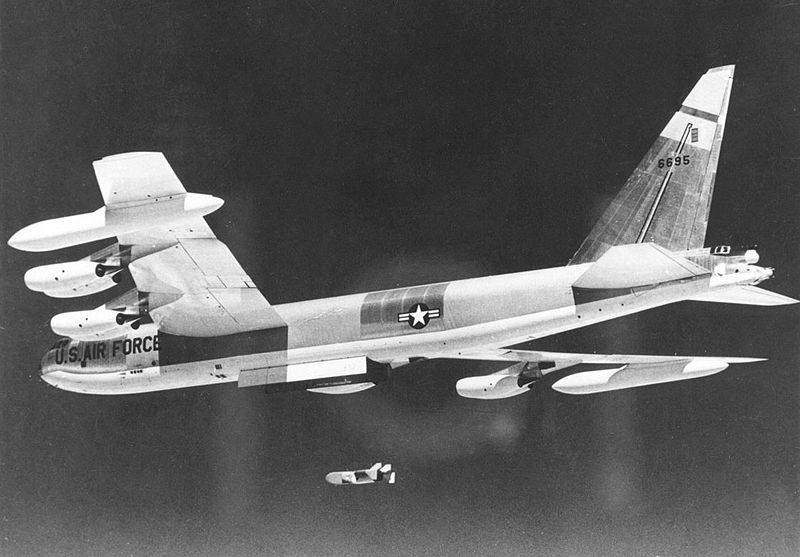
After it became known about the mass deployment of S-75 mobile air defense systems in the USSR, the strategic command aviation Concerned about reducing the vulnerability of their own bombers. Two false targets weighing 543 kg each, could be suspended under the wing of a strategic bomber. After the reset, the wings of the ADM-20 were laid out, and the flight was carried out along a pre-programmed route. A turbojet engine with a thrust of 10,9 kN provided a maximum speed of 1020 km / h and a flight altitude of 15 meters with a range of about 000 km. To increase the radar signature on a false target, special reflectors were mounted. In the internal volume could be placed equipment simulating the operation of on-board radio systems of a bomber or a burner with a supply of gasoline to reproduce the thermal portrait of the aircraft.
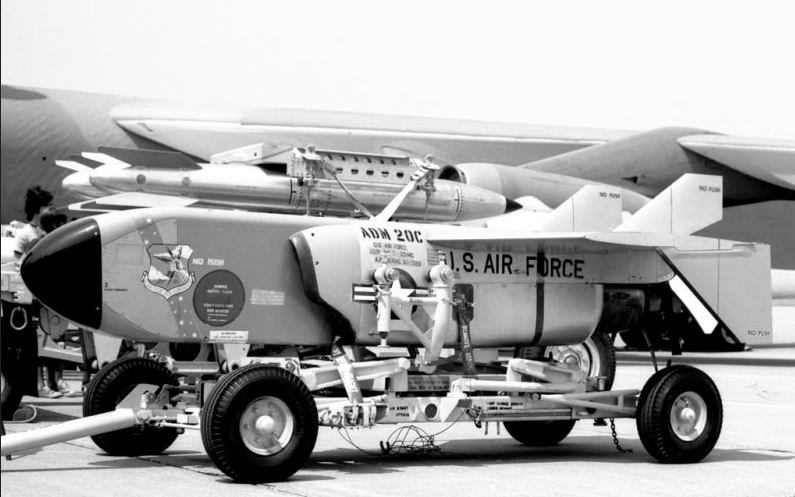
In total, the strategic command air wings, equipped with B-52 bombers, received about 500 false targets. They were in service until the 1978 year, after which they were shot at the exercises of the air defense forces.
In 1960, the Eglin airbase was embroiled in secret CIA operations against Cuba. The 20 C-54 Skymaster transport aircraft from the 1045 Air Wing, which delivered cargo for Cuban anti-government forces, were based here. Aircraft participating in illegal missions were placed in a secluded area of Duke Field, near the landfill.
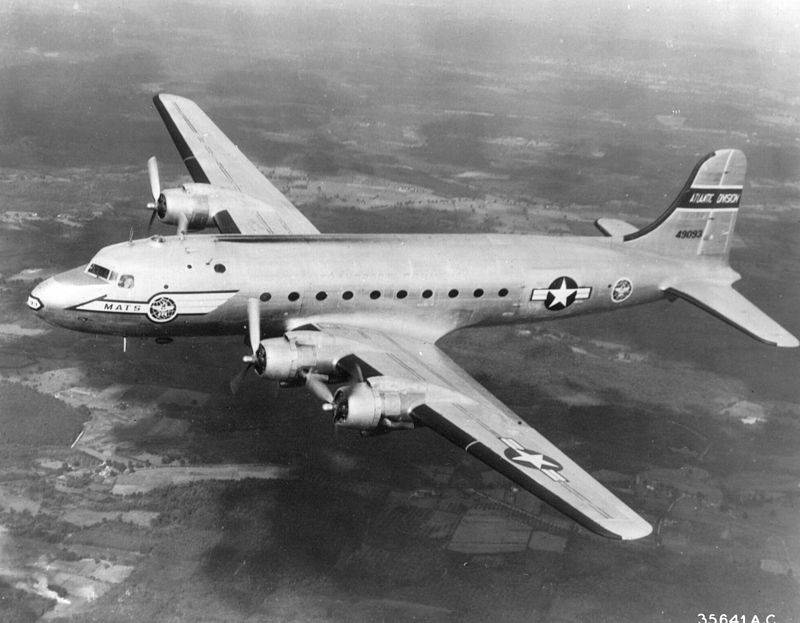
The flights were carried out by civilian pilots recruited by the CIA, or by foreign nationals. After the defeat of the 2506 brigade that landed on 17 on April 1961, in Cuba in the Bay of Pigs, the CIA operation at Eglin was curtailed.
19 February 1960, the first two-stage rocket RM-86 Exos launched from the test site. The Honest John tactical rocket was used as the first stage, the Nike-Ajax anti-aircraft rocket served as the second stage, and the third stage of the original development.
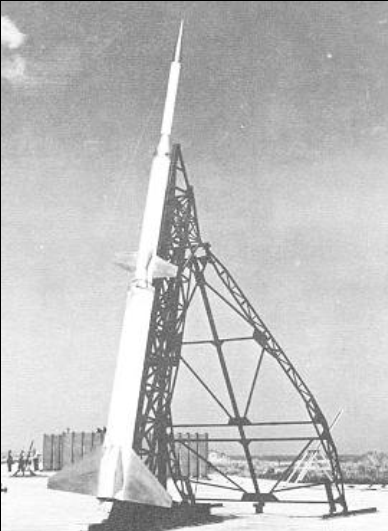
The rocket with a launch weight of 2700 kg and a length of 12,5 m reached an altitude of 114 km. The purpose of the launch was to study the dustiness and chemical composition of the atmosphere at high altitude. In total, seven RM-86s were launched in Florida.
27 September 1960 of the year at the Eglin launch site a Nike Asp sounding rocket was launched. The rocket with a take-off mass of 7000 kg, a diameter of 0,42 m and a length of 7,9 m rose to a height of 233 km. Start and acceleration of the rocket was carried out using the first stage of large diameter. The purpose of the launch was the study of cosmic radiation, but because of the failure of the measuring equipment, the results were not obtained.
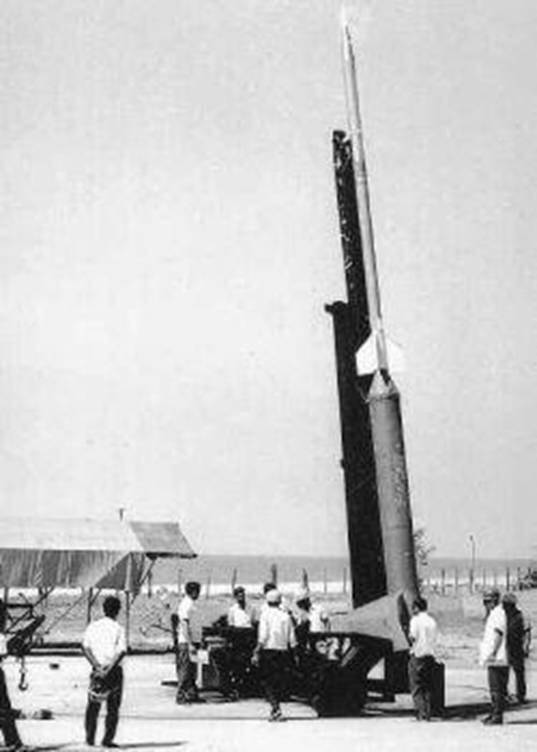
8 March Florida 1961 launched the first sounding rocket Astrobee 1500 in Florida. A three-stage solid-fuel rocket with a take-off mass of 5200 kg, a diameter of 0,79 m and a length of 10,4 m could rise to a height of more than 300 km.
A series of sounding rocket launches was conducted to study the ionosphere and collect information about cosmic radiation. In parallel, the calculations of the American radar system NORAD learned to detect rocket launches.
In the second half of 1961, four Italian fighter bomber Fiat G.124 were flown to Eglin aboard the C-91 transport. The US military became interested in simple and inexpensive Italian combat aircraft; it was of interest as a direct attack aircraft attack aircraft. After extensive testing, G.91 received a positive assessment, but under pressure from American aircraft manufacturing corporations they refused to buy it.
In July, the Canadair CP-1962 Argus, a Canadian naval patrol aircraft, arrived in Florida 107 for testing in a hot and humid climate. This machine, which appeared in the 1957 year, compared with the American Lockheed P-3 Orion, was heavier and had a longer range.
In 1962, the tests of the Douglas GAM-87 Skybolt air-launched ballistic missile began. It was assumed that the US strategic bombers B-52 and the British Avro Vulcan would be equipped with ballistic missiles.
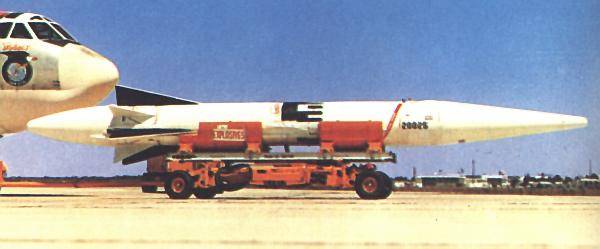
According to project data, a two-stage solid fuel GAM-87 with a starting mass of just over 5000 kg and a length of 11 meters after dropping from a bomber should have a launch range of more than 1800 km. The power of the thermo-nuclear warhead W59 was 1 Mt. Targeting was carried out using inertial and astronavigational systems. During the tests, it turned out that the guidance system requires fine-tuning, and the rocket engines did not always work properly. As a result, the Air Force Command became skeptical about the idea of adopting a ballistic missile launched from a bomber.
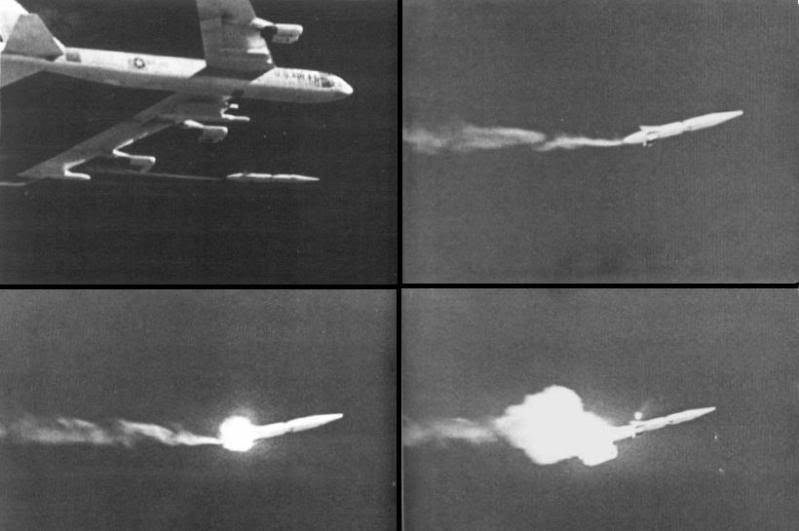
The UGM-87 Polaris missile deployed on submarine nuclear-powered ships became the grave digger of the GAM-27 ballistic air-launched missile. The UGM-27 SLBM proved to be more profitable from an economic point of view, since the time of the SSBN combat patrols was much longer, and the vulnerability compared to B-52 was less. In addition, the Skybolt system competed with the mine-based ICBM program LGM-30 Minuteman. As a result, despite the objections of the British, the program was closed in December 1962.
In October, 1962, during the Caribbean crisis, considerable forces were concentrated in the territory of the air base, preparing to strike Cuba. The 82 Airborne Division and transport aircraft arrived here. F-104C 479 th Fighter Wing was redeployed from George George Base in California. The B-52 and KS-135 4135 th strategic air wing led to increased combat readiness. Fortunately for all mankind, the crisis was resolved peacefully, and tensions subsided.
As mankind explored the cosmos, the Ellin airbase was involved in the American manned space program. In the interests of the implementation of the program of the combat space plane Boeing X-20 Dyna-Sor, flight tests were conducted on a specially prepared two-seater fighter NF-101B Voodoo. The launch of the X-20 was to be carried out using the Titan III booster.
It was assumed that the spaceplane will be used as a space bomber and reconnaissance aircraft, as well as be able to fight with satellites. However, the project X-20 was closed due to excessive cost of living and difficulties of practical implementation. Subsequently, the developments obtained in the X-20 program were used to create the X-37 and X-40 devices.
After the start of the Apollo program at Eglin, the 48-I Rescue Squadron was formed, where the search and recovery capsules used in the Gulf of Mexico were used by the search and rescue aircraft SC-54 Rescuemasters and the amphibian Grumman HU-16 Albatross.
In October, the 1962 of the year in 65 km east of the main runway of the airbase, construction of the AN / FPS-85 radar station began on the edge of the airfield. The main purpose of the radar with a phased antenna array was the detection in space of warheads of ballistic missiles from the south. The need to control the space in this direction was motivated by the appearance in the USSR of submarines with ballistic missiles that could be launched from any part of the world’s ocean. The station went on alert in 1969 year. The delay in commissioning the radar was due to the fact that the almost ready radar in the 1965 year at the stage of acceptance tests was destroyed by fire.
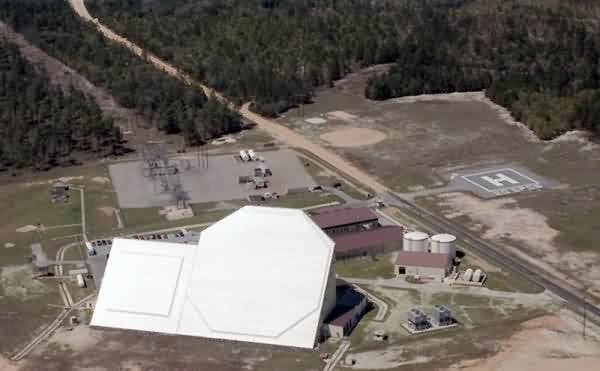
Next to the radar complex with a length of 97 m, a width of 44 m, and a height of 59 m, there is an own diesel power station, two water wells, a fire station, living quarters for the 120 man and a helipad.
The radar operates at a frequency of 442 MHz and has a pulse power of 32 MW. The antenna is tilted relative to the horizon at an angle 45 °. Viewed sector 120 °. It was reported that the AN / FPS-85 radar can see about half of the objects in Earth orbit. According to American data, the radar in Florida is able to detect a metal object the size of a basketball at a distance of 35000 km.
From the very beginning, electronic computers with storage blocks on ferrites were used to process the received radar information and plot the flight paths of the detected objects. Since the station was commissioned, it has been repeatedly upgraded. As of 2012, data was processed by three IBM ES-9000 computers.
In the middle of 90, the AN / FPS-85 radars were reoriented to other tasks. The station was focused on tracking space objects and preventing spacecraft collisions with each other and space debris. Despite its age, the radar copes well with its tasks. With its help, it was able to detect, classify and compose orbits of approximately 30% of objects in near space.
After the United States got involved in an adventure in Southeast Asia, in Florida, before being sent to the combat zone, many samples of aviation technology were tested and refined. The Cessna A-37 Dragonfly became a specially developed light "counterguerrilla" attack aircraft. The first YAT-37D, converted from TC-T-37, arrived in Eglin in October 1964. According to the test results, the car was modified, and the upgraded version appeared next year. Tests have demonstrated the suitability of the aircraft to combat irregular formations that do not have heavy anti-aircraft weapons. But in the initial period of the Vietnam War, the Air Force Command believed that all tasks could be accomplished with the help of expensive jet warplanes created for the “big war” and the existing piston drums Douglas A-1 Skyraider. Therefore, the fate of the attack aircraft for a long time was uncertain, and the first order for the 39 A-37A was issued only at the beginning of the 1967 year.
After successful military tests in the battle zone in May 1968, the A-37B went into a series with more powerful engines, enhanced protection and a system for in-flight refueling. The aircraft was in production until 1975, for 11 years that have passed since the first prototype appeared, 577 machines were built. "Dragonfly" was actively used in numerous counterguerrilla operations and demonstrated high efficiency.
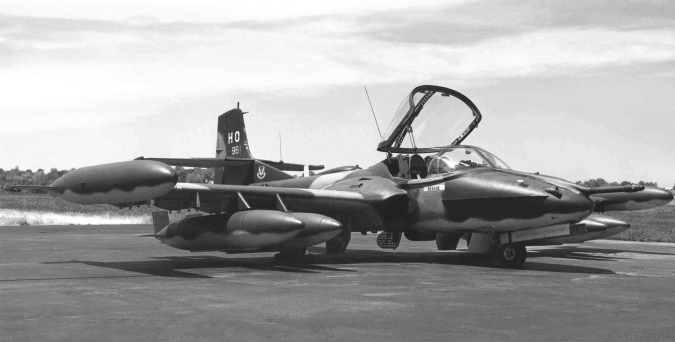
The aircraft was armed with a six-barrel machine gun rifle caliber GAU-2B / A. At eight points of the suspension could be placed combat load mass 1860 kg. The nomenclature of weapons included: NAR, bombs and incendiary tanks weighing 272-394 kg. The maximum take-off weight was 6350 kg. Combat radius - 740 km. Maximum speed - 816 km / h.
The Eglin Air Base is the birthplace of the first American AC-47 Spooky ganship. Tests of the aircraft with three 7,62-mm six-barrel machine guns M134 Minigun at the test site confirmed the efficiency of the concept of an armed transport aircraft for use in counterinsurgency fighting. The combat debut of AC-47 in Vietnam took place in December 1964.
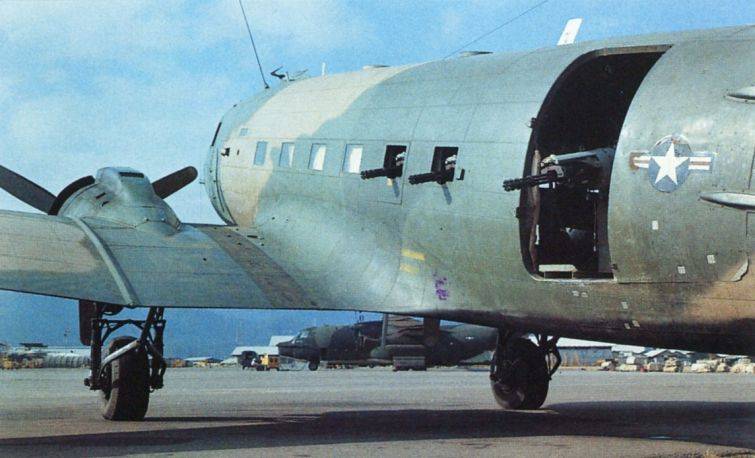
Indochina became the first place of combat use drone Ryan Model 147B Firebee (BQM-34), based on the Ryan Q-2A Firebee unmanned target. Intelligence drones launched and controlled from a DC-130A Hercules aircraft. Testing of UAVs and equipment of carrier aircraft began in May 1964, and in August they already arrived in South Vietnam.
With the help of UAVs AQM-34Q (147TE), it was possible to fix the operating modes of the CA-75 Dvina SAM and guidance system and remotely detonate the warhead. Thanks to this, the Americans were able to quickly create suspension EW containers and reduce losses from anti-aircraft missiles. After the end of the Vietnam War, American experts wrote that the cost of developing the BQM-34 UAV was more than offset by the intelligence obtained.
[Center]
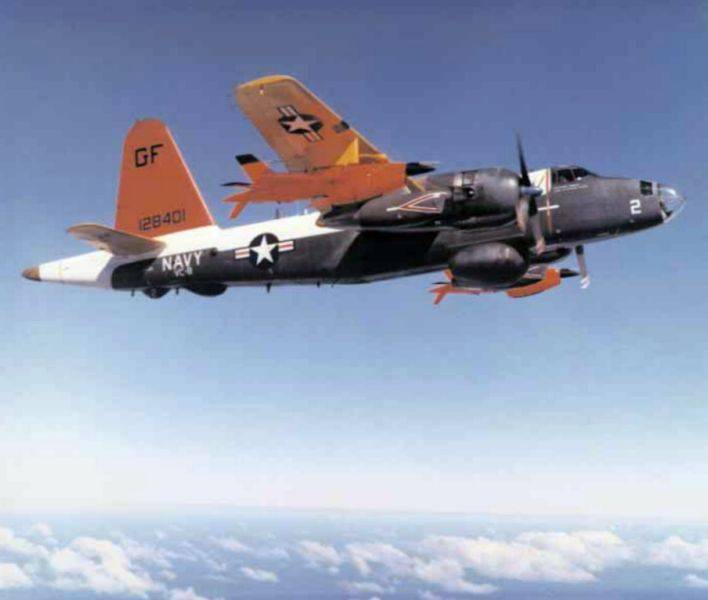
For the air launch of the BQM-34, the DC-130A Hercules and DP-2E Neptune aircraft carriers were used. Also, the drones could start from a towed ground launcher using a solid-fuel accelerator, but the range was smaller.
An unmanned vehicle with a mass of 2270 kg could cover a distance of 1400 km with a speed of 760 km / h. In addition to reconnaissance, there were shock versions with a bomb load or with an anti-radar missile. In the case of the installation of a high-explosive warhead, the drone turned into a cruise missile. In total, more than 7000 UAVs BQM-34 were built, of which 1280 are radio-controlled targets.
The use of strategic bombers in Vietnam, primarily aimed at delivering nuclear strikes, required special training for crews, improvement of navigation equipment and bomb sights. 18 June 1965, before the start of the raids in Southeast Asia, the B-52F crews from the 2-th bombing wing, taking off from the Barksdale airbase in Louisiana, completed the bombing with conventional high-explosive bombs at the Florida site.
Google Earth satellite image: a target at the Florida test site where B-52 crews mastered bombing skills
Faced with the advanced air defense system of the DRV, the US Air Force was forced to improve the EW systems, reconnaissance and force the creation of high-precision aircraft munitions. The F-100F Wild Weasel I was the first American specialized radar hunter to use. At the two-seater Super Saibra, a broadband radar-irradiation fixation device was installed, with sensors to determine the direction in which the ground-based radar equipment is located.
Four of the first F-100F Wild Weasel I have passed the test at the Eglin training ground at the beginning of 1965. In November, they were handed over to the 338 th fighter wing operating in Vietnam. Soon, one plane was shot down by anti-aircraft fire.
At the beginning of 1965, the B-52G 4135 strategic bombers left the Eglin airbase. Soon, the cleared airfields were used to house the latest McDonnell Douglas F-4C Phantom II fighter jets, which were undergoing evaluation operational tests at the airbase, and the weapons and aiming and navigation complex were tested at the base. In 1966, they were replaced by an F-4D 33 th tactical wing. It was the “Phantoms”, based at the Eglin airbase, that became the first combat vehicles to test the adjustable laser-guided bombs.
During 1965, several lightweight Northrop F-5A Freedom Fighter fighter jets were evaluated within the Sparrow Hawk project at Eglin. After the American military aircraft collided with light and maneuverable MiGs in Vietnam, it became clear that the adopted concept of air combat using only missile weapons was not consistent. In addition to high-speed high-altitude interceptors, designed to fight with long-range enemy bombers, light maneuverable tactical fighters armed with melee rockets and cannons are still needed. After the evaluation tests of the Douglas A-4 Skyhawk and Fiat G.91, which completely satisfied the military as light percussion machines, experts concluded that to win the air battle, specially designed fighters with the best maneuverability and rate of climb are required. In addition, the US allies expressed a desire to get an inexpensive replacement for the aging Sabr.
The Freedomfighter with a maximum take-off weight of 9380 kg could initially carry a combat load of about 1500 kg, the built-in armament consisted of two 20-mm guns. The combat radius in the version with two AIR-air AIM-9 - 890 km. Maximum speed - 1490 km / h.
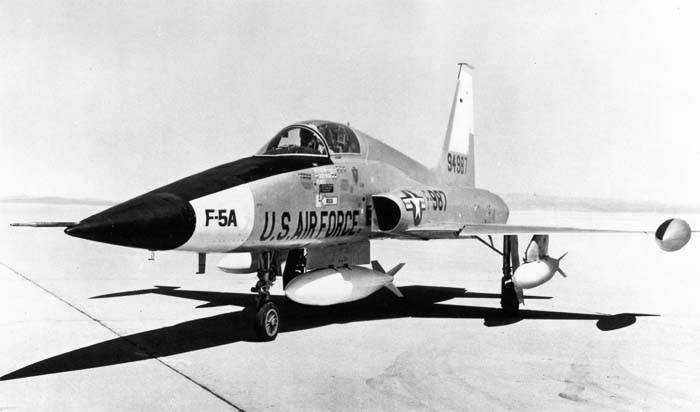
Tests in Florida were successful, but due to pilot error, one plane crashed. According to the results of tests on the F-5A, they made changes to the composition of the avionics, the most vulnerable areas covered with armor and installed air-refueling equipment. After that, the 12 fighters went to South Vietnam, where they fought as part of the 4503 fighter tactical squadron. F-5A for six months made about 2600 combat missions over South Vietnam and Laos. In this case, nine aircraft were lost: seven from anti-aircraft fire, two in flight accidents. Subsequently, the F-5 fighter aircraft were repeatedly upgraded and widely disseminated and participated in numerous local conflicts. A total of X-NUMX F-847A / B and 5 F-1399 / F were built.
In 1965, the US Air Force Command initiated the development of low-cost, laser-guided guided bombs. A key element of the guidance system of guided aircraft ammunition is the overhead container equipment for laser targeting. Pave's secret project was carried out at the Eglin airbase by the Air Force Arms Laboratory, as well as by Texas Instruments and Autonetics.
As a result, tactical aircraft received a suspension container AN / AVQ-26 and guided munitions with laser homing heads KMU-351B, KMU-370B and KMU-368B. Fighting use of laser-guided bombs took place in Vietnam in 1968. They demonstrated high efficiency when striking stationary objects. According to US data, from 1972 to 1973 a year in the area of Hanoi and Haiphong, 48% hit their guided bombs. Accuracy of free-fall bombs dropped on targets in this area was a little over 5%.
In the summer of 1965, in Florida, they tested the Grumman E-2 Hawkeye Airliner aircraft, commissioned by the Navy. The car turned out to be crude and required further work, but the specialists of the flight test center noted that if the deficiencies were rectified, the aircraft could be used from advanced airfields together with tactical fighters. It was not immediately possible to bring the Hokaya equipment to an acceptable level. The Westinghouse AN / APY-1 radar with a rotating antenna in a dish-shaped fairing showed low reliability and gave false serifs from objects on the ground. In windy weather, the swinging crowns of trees were perceived as low-altitude targets. To eliminate this drawback, a very powerful computer by the standards of 60-s was required, capable of selecting targets and displaying on the screens of operators only genuine aerial objects and their real coordinates. The problem of sustainable selection of air targets on the background of the ground for the deck E-2С was solved only in 10 years. However, the Air Force leadership was not interested in the Hokai, in the 60s there was a significant amount of heavy EU-121 Warning Star at the disposal of the air force, which in the middle of the 70's replaced the E-3 Sentry of the AWACS system.
In 1966, the third prototype of the Lockheed YF-12 arrived at the airbase for testing air-to-air missiles Hughes AIM-47А Falcon. During flight tests, the YF-12 set speed records - 3331,5 km / h and altitude - 24462 m. The YF-12 was developed as a heavy long-range interceptor equipped with a powerful Hughes AN / ASG-18 radar, a thermal imager and a computerized fire control system. The total weight of the equipment exceeded 950 kg. According to preliminary calculations, a hundred heavy interceptors could surely cover the entire mainland US from bomber attacks and replace existing fighters involved in NORAD.
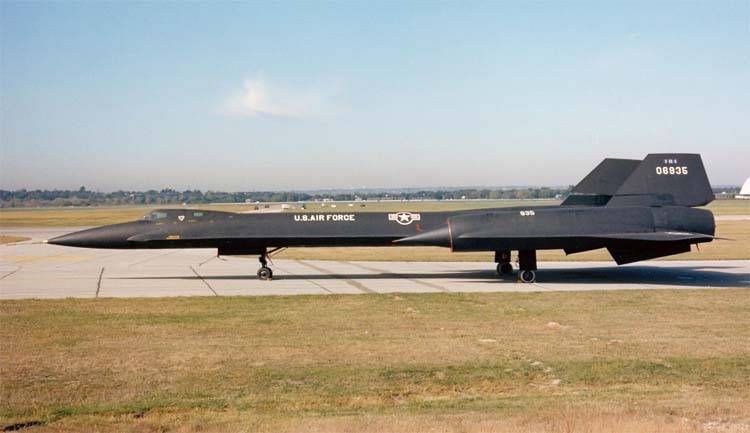
According to the reference data, the AN / ASG-18 pulse Doppler radar could detect large high-altitude targets at a distance of more than 400 km and was able to select targets against the background of the earth. The crew of the YF-12 consisted of a pilot and an OMS operator, who was also assigned the duties of a navigator and radio operator. From the Lockheed A-12 reconnaissance used by the CIA, the YF-12 interceptor differed in the shape of the bow. The staff of the interceptor’s regular armament consisted of three AIM-47А missiles located on the internal suspension in special compartments in the fuselage blasts.
AIM-47A tests in Florida have demonstrated the performance of the fire control system and the rocket itself. Seven missiles launched against targets hit targets 6. One rocket failed due to a power failure. During the last test, a rocket launched from a carrier flying at 3,2M speed and 24000 m altitude hit the Stratojet, converted into a radio-controlled target. At the same time, QB-47 flew at an altitude of 150 meters.
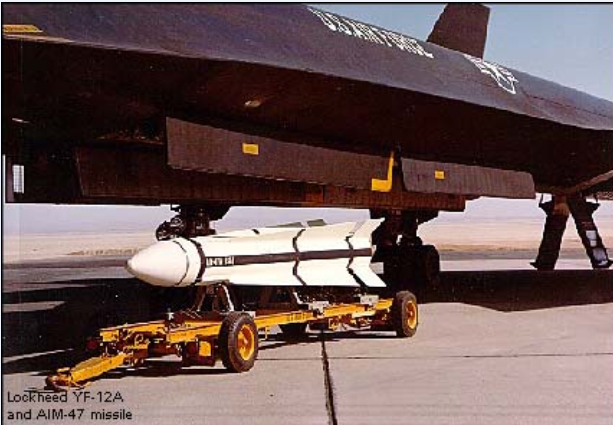
UR AIM-47 Falcon structurally largely repeated AIM-4 Falcon. The Lockheed liquid-jet engine provided 210 kilometers distance and 6M speeds. But later, the military demanded a switch to solid fuel, which lowered the speed to 4M, and the launch range to 160 km. Guidance missiles on cruising flight mode occurred semi-active radar seeker with illumination from radar AN / ASG-18. When approaching the goal involved IR GOS. Initially, two types of warheads were envisaged: fragmentation weighing about 30 kg or nuclear W-42 with power 0,25 kt. Rocket length 3,8 meter after preparation for the application weighed 360 kg. The rocket diameter was 0,33 m, and the wingspan of 0,914 m.
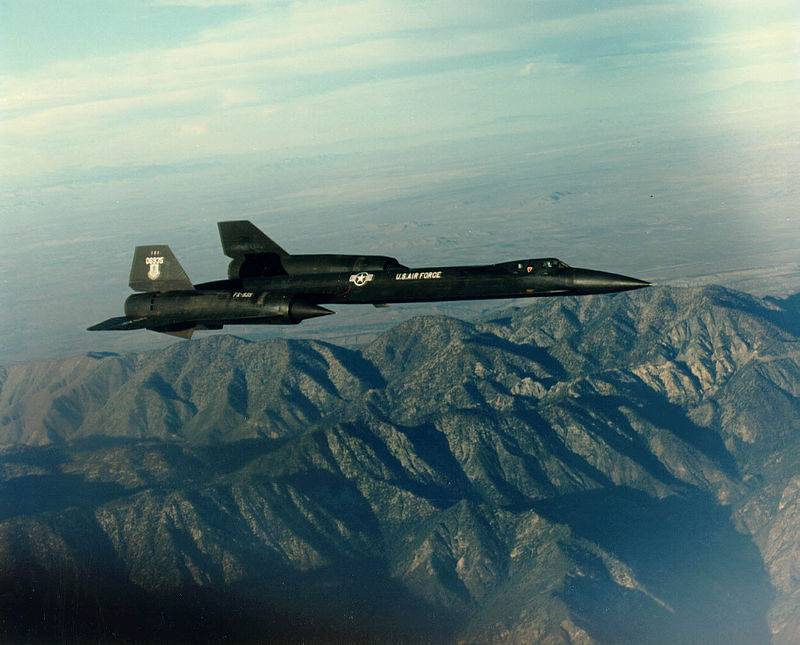
Due to the excessive cost, only three experienced YF-12 were built. At the end of 60, it became clear that the main threat to US territory was not the relatively small Soviet long-range bombers, but the ICBMs and SLBMs, which in the USSR grew every year. Simultaneously with the heavy interceptor, the AIM-47 Falcon rocket was buried. Subsequently, the obtained developments were used to create the long-range AIM-54A Phoenix SD.
14 August 1966 during an unsuccessful landing at the Eglin airbase experienced YF-12 suffered serious damage and caught fire. Firefighters managed to defend the rear of the aircraft, which was later used for static tests scout SR-71.
In the second half of 1966, in the interests of aviation units fighting in Vietnam, 11 C-130 Hercules were converted into search and rescue HC-130P. These vehicles could also be used to refuel Sikorsky SH-3 Sea King helicopters in the air.
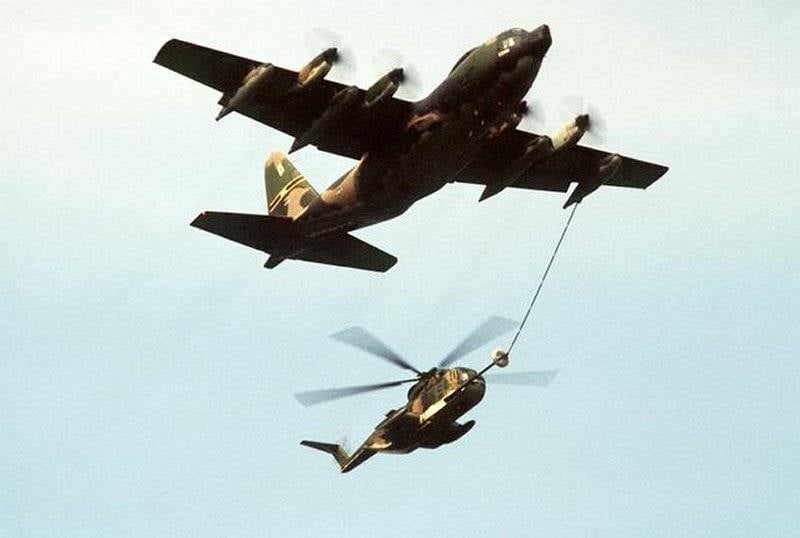
In Vietnam, there were frequent cases when pilots of aircraft destroyed by anti-aircraft guns ejected over the sea. Having found the pilots in distress, the HC-130P, which has an impressive fuel reserve, was able to direct and refuel the rescue helicopter SH-3. Such a tandem made it possible to repeatedly increase the time spent in the air helicopters "Sea King". 1 June 1967, two SH-3 with several gas stations in the air from HC-130P, crossed the Atlantic and landed near Paris, spending hours 30 in the air, 46 minutes and covering the distance 6870 km.
In April, the 1967 of the year at the Harburt airfield, which is located near the Eglin main base, was based on the 4400-th special squadron, the training center of the Special Operations Aviation Command was established. During the years of the Vietnam War, methods of counterguerrilla operations were carried out on specially designed aircraft for this purpose, and flight and technical personnel were trained. The first pilots trained for the jungle war were trained on piston T-28 Trojan, A-1 Skyraiders and B-26 Invader.
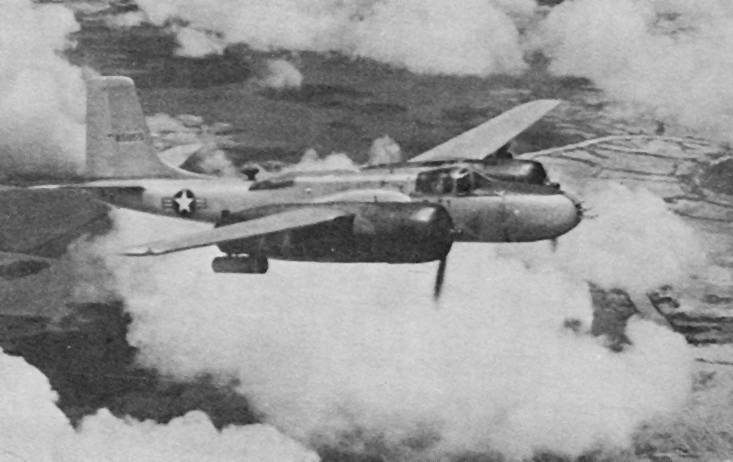
In the future, the crews of the “hutships” were trained here: AC-47 Spooky, AC-119G Shadow, AC-119K Stinger and AC-130. Spotters, scouts and light attack aircraft: OV-10A Bronco, O-2A Skymaster, QU-22 Pave Eagle.
[Center]
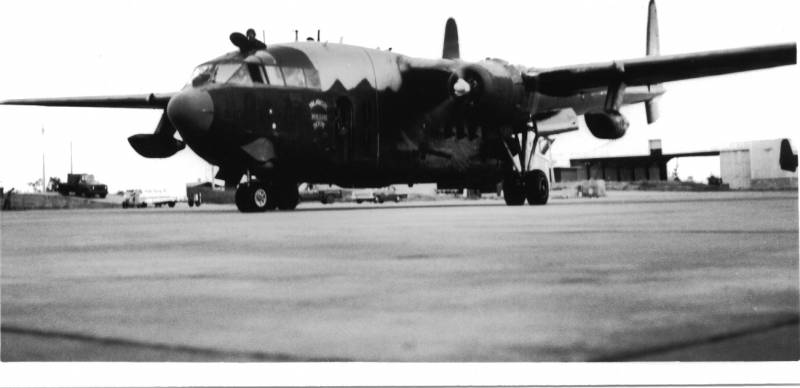
The tests of the first AC-130A Specter as part of the Gunship II project lasted from June to September 1967. Compared with the AC-47 and AC-119K, the Spectrum had more powerful weapons and could be in the air longer.
In addition to the "Ganships", specialists from the Central Armaments Laboratory of the US Air Force equipped two NC-1967K Рrovider, also known as AC-123K, in the 123 year to fight in the dark with vehicles on the Ho Chi Minh Trail.
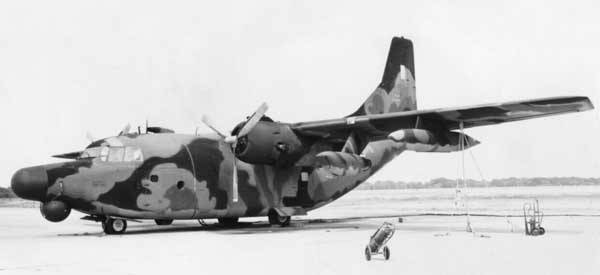
Modified vehicles differed from the C-123 vehicles with an elongated nose section, where the radar from the F-104 fighter and the massive spherical fairing with optoelectronic thermal cameras and laser range finder were used. Also in the avionics included equipment AN / ASD-5 Black Crow, which allowed to detect the operation of the ignition system of cars. There were no guns on the plane, targets were hit by dropping cluster bombs from the cargo hold. Bombing was carried out according to the onboard computer system.
After completing the ground tests, in the summer of 1968, both aircraft were transferred to South Korea. It was supposed that NC-123K would help the South Korean special services to detect high-speed small-sized boats, on which saboteurs were brought from the DPRK. From August to September, 28 aircraft patrolled the territorial waters of South Korea, but found no one. In November, the 1968 aircraft sent the 16 Squadron of Special Operations based in Thailand, where they served from the end of 1969 to June 1970 of the year. During combat service, it turned out that the “tricked out” on-board equipment in the conditions of heat and high humidity was not working reliably and more planes of this modification were not built.
To be continued ...
Based on:
http://www.airwar.ru/weapon/avv/aim47.html
http://testpilot.ru/usa/hughes/aim/47/gar9.htm
http://www.afwing.com/intro/f101/voodoo-13.htm
http://www.globalsecurity.org/military/systems/aircraft/hc-130-pics.htm
- Linnik Sergey
- Florida landfills (part of 1)
Florida landfills (part of 2)
Florida landfills (part of 3)
Florida landfills (part of 4)
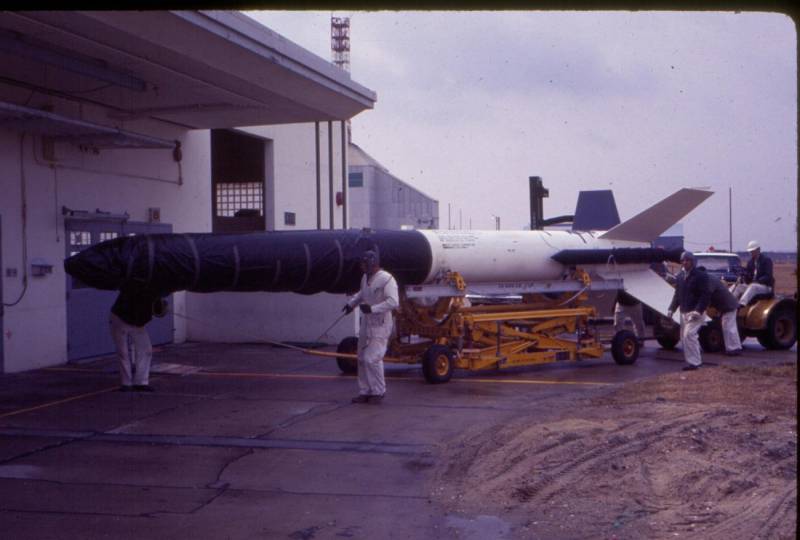
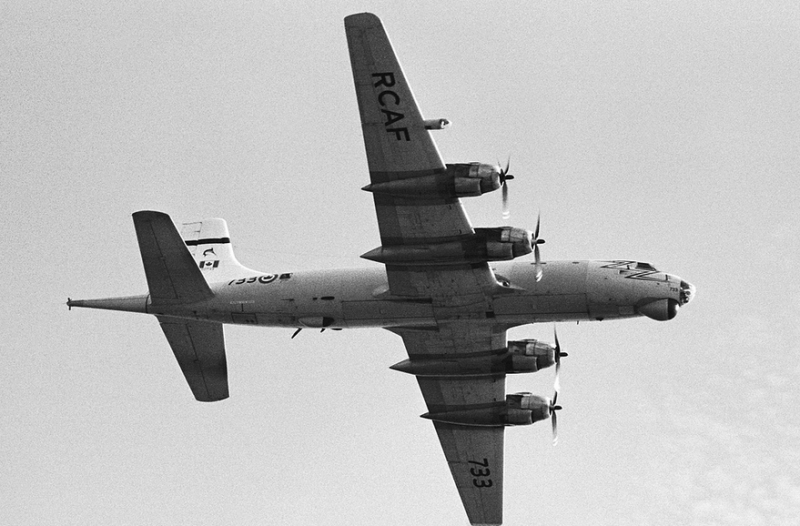
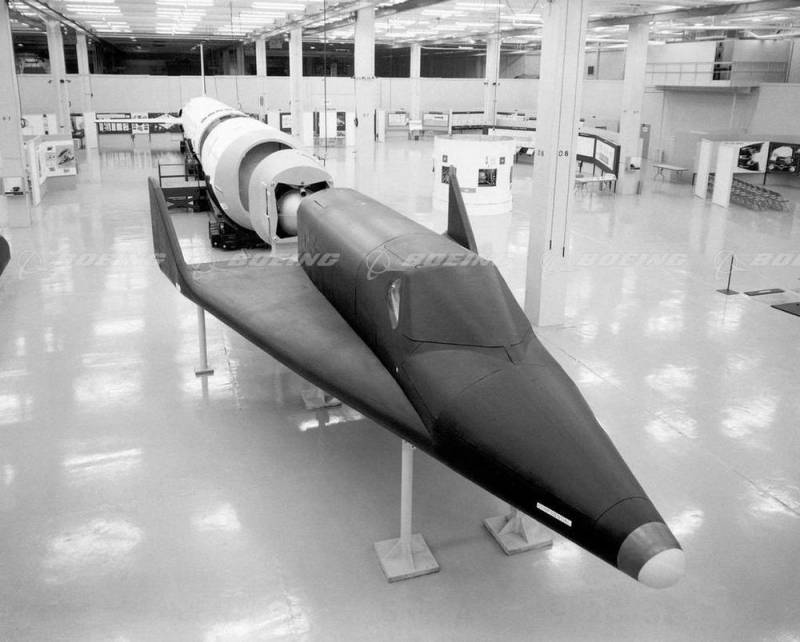
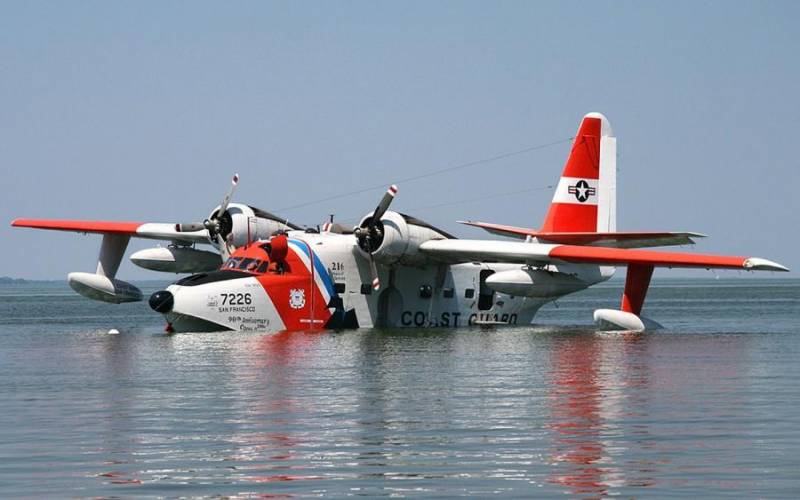
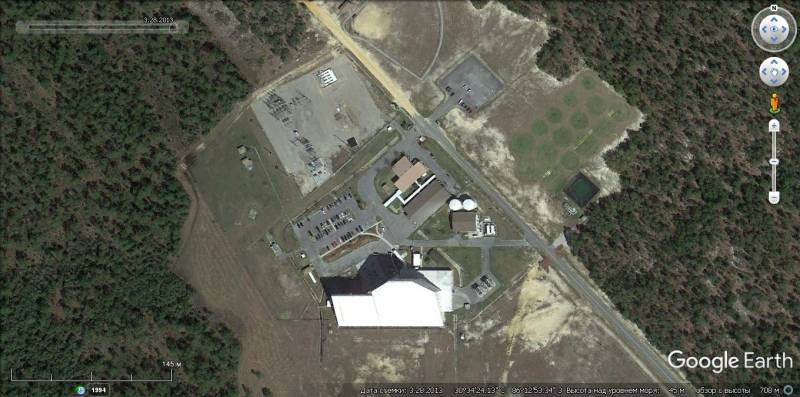
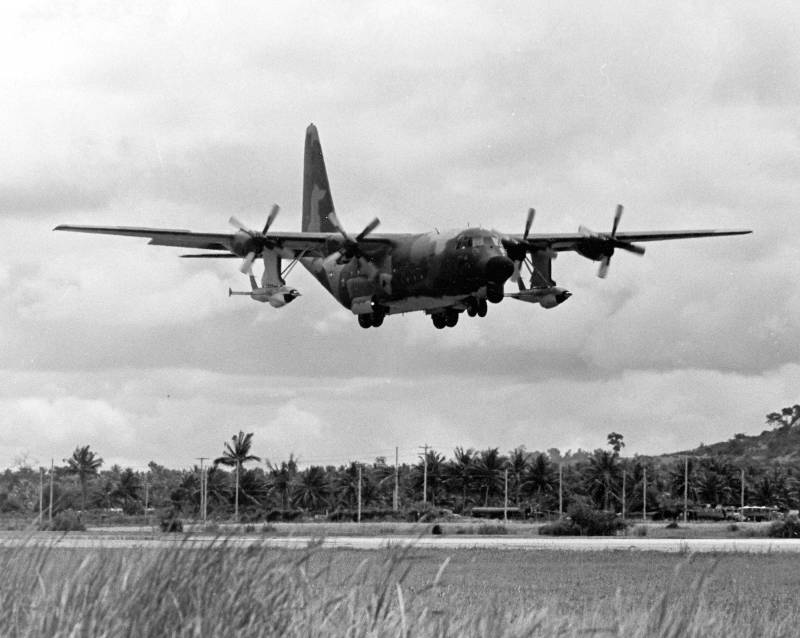
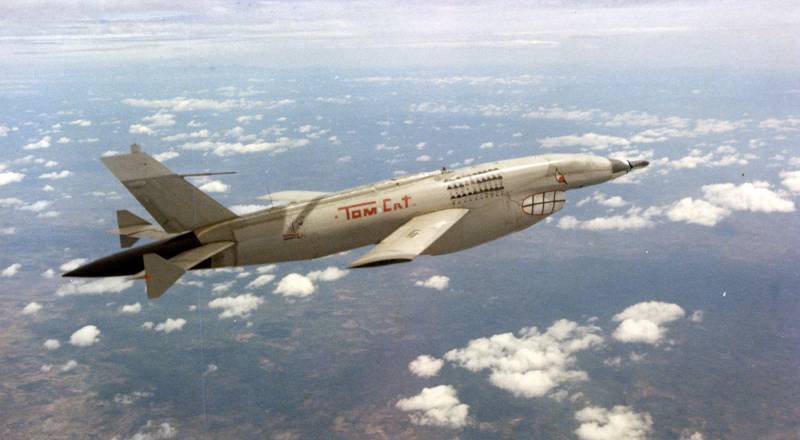
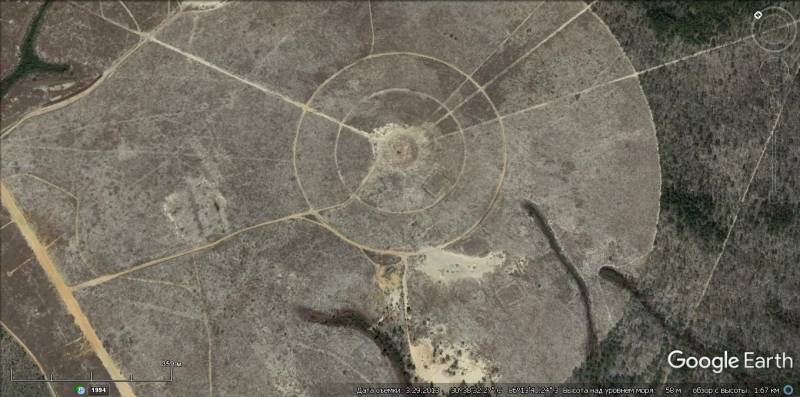
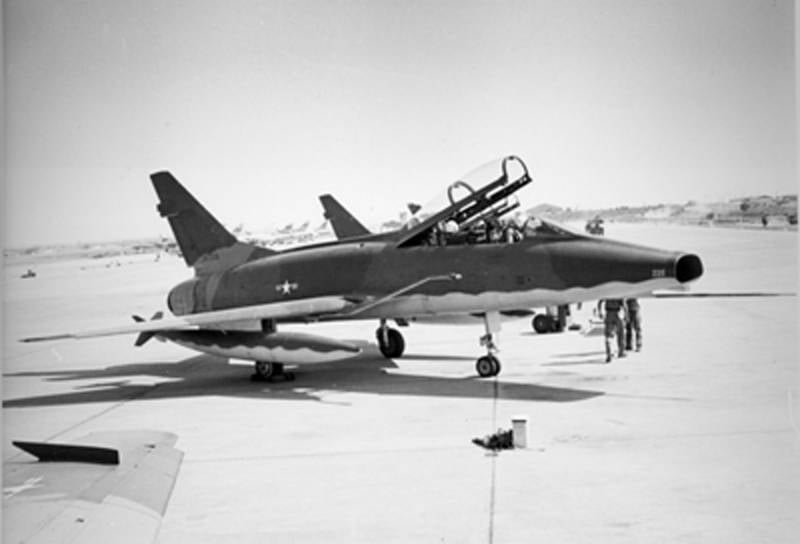
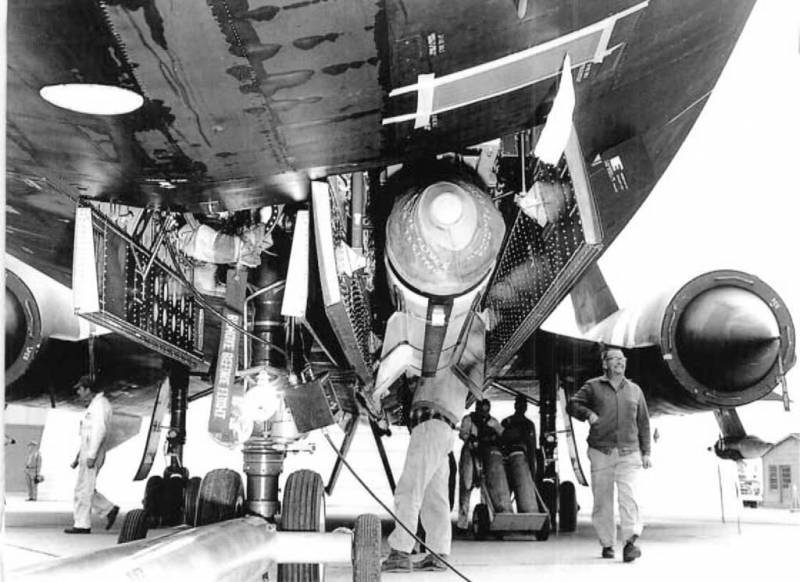
Information